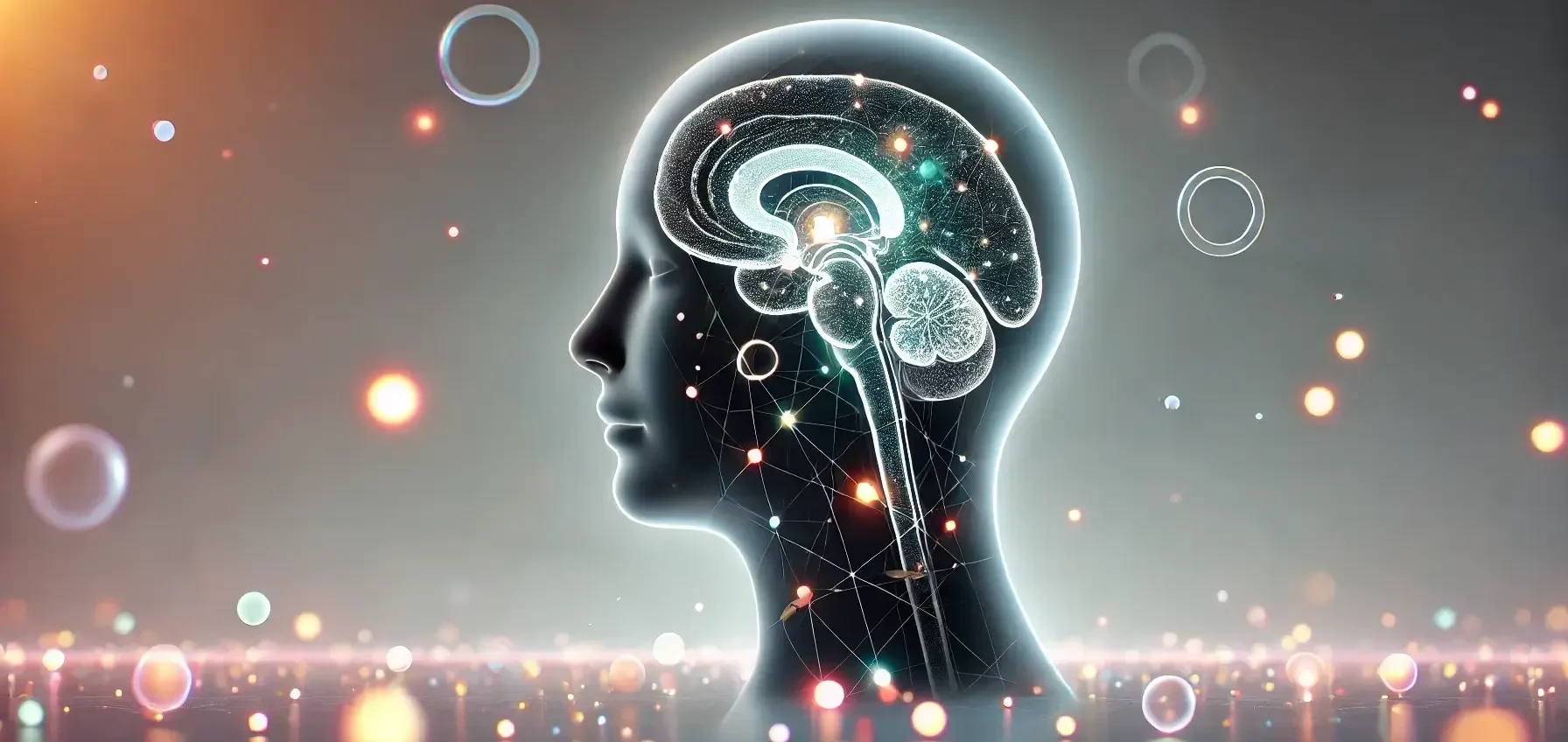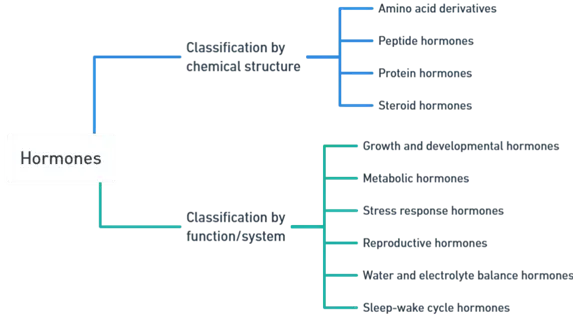Hormones Introduction:
- Hormones are chemical messengers produced by endocrine glands that are secreted into the bloodstream to regulate various physiological processes in the body.
- They play a crucial role in maintaining homeostasis, growth and development, metabolism, reproduction, and stress response.
- They act on target cells or organs that have specific receptors for these hormones.
- This above is the brief Hormones introduction.
Functions of hormones:
-
Growth and development:
- Hormones like growth hormone (GH), insulin-like growth factor (IGF), and thyroid hormones promote cell growth, differentiation, and tissue repair.
-
Metabolism:
-
Reproduction:
- Sex hormones like Estrogen, progesterone, and testosterone regulate reproductive functions, such as the menstrual cycle, pregnancy, and the development of secondary sexual characteristics.
-
Stress response:
- Hormones like cortisol, epinephrine, and norepinephrine help the body respond to stress by mobilizing energy reserves and increasing heart rate and blood pressure.
-
Water and electrolyte balance:
- Hormones like aldosterone and antidiuretic hormone (ADH) regulate the balance of water and electrolytes in the body.
-
Sleep-wake cycles:
- Melatonin, produced by the pineal gland, regulates sleep-wake cycles and circadian rhythms.
Classification of hormones:
Hormones can be classified based on their chemical structure:
-
Amino acid derivatives:
- These hormones are derived from amino acids, such as tyrosine and tryptophan.
- Examples include thyroid hormones (T3 and T4), catecholamines (epinephrine, norepinephrine, and dopamine), and melatonin.
-
Peptide hormones:
- These hormones are composed of short chains of amino acids. Examples include insulin, glucagon, growth hormone, and antidiuretic hormone.
-
Protein hormones:
- These hormones are composed of long chains of amino acids.
- Examples include follicle-stimulating hormone (FSH), luteinizing hormone (LH), and human chorionic gonadotropin (hCG).
-
Steroid hormones:
- These hormones are derived from cholesterol and have a distinct four-ring structure.
- Examples include cortisol, aldosterone, testosterone, oestrogen, and progesterone.
Hormones can also be classified based on their function or the system they act upon:
-
Growth and developmental hormones:
- Growth hormone, insulin-like growth factor, and thyroid hormones.
-
Metabolic hormones:
- Insulin, glucagon, and thyroid hormones.
-
Stress response hormones:
- Cortisol, epinephrine, and norepinephrine.
-
Reproductive hormones:
- Estrogen, progesterone, testosterone, follicle-stimulating hormone, and luteinizing hormone.
-
Water and electrolyte balance hormones:
- Aldosterone and antidiuretic hormone.
-
Sleep-wake cycle hormones:
- Melatonin.
Here is a table summarizing the primary endocrine glands, their locations, hormones, and functions in the context of the endocrine system:
| Gland | Location | Hormone(s) | Function |
| Hypothalamus | Brain | Various releasing and inhibiting hormones | Regulate the release of hormones from the pituitary gland |
| Pituitary gland | Base of the brain | Growth hormone (GH) | Stimulate growth, cell reproduction, and regeneration |
| Adrenocorticotropic hormone (ACTH) | Stimulate the adrenal cortex to produce cortisol | ||
| Thyroid-stimulating hormone (TSH) | Stimulate the thyroid gland to produce thyroid hormones | ||
| Luteinizing hormone (LH) | Stimulate ovulation and testosterone production | ||
| Follicle-stimulating hormone (FSH) | Stimulate the growth of ovarian follicles and sperm production | ||
| Prolactin (PRL) | Stimulate milk production | ||
| Antidiuretic hormone (ADH) | Regulate water balance by reducing urine output | ||
| Oxytocin | Stimulate uterine contractions during childbirth and milk ejection during breastfeeding | ||
| Thyroid gland | Neck | Thyroxine (T4) and triiodothyronine (T3) | Regulate metabolism, growth, and development |
| Calcitonin | Regulate calcium levels in the blood | ||
| Parathyroid glands | Back of the thyroid gland | Parathyroid hormone (PTH) | Regulate calcium and phosphorus levels in the blood |
| Adrenal glands | Above the kidneys | Cortisol | Regulate stress response, metabolism, and immune function |
| Aldosterone | Regulate sodium and potassium balance and blood pressure | ||
| Epinephrine and norepinephrine | Mediate the fight-or-flight response | ||
| Androgens | Contribute to the development of secondary sexual characteristics | ||
| Pancreas | Abdomen | Insulin | Lower blood glucose levels by promoting glucose uptake into cells |
| Glucagon | Raise blood glucose levels by promoting the breakdown of glycogen | ||
| Gonads | Testes (males) | Testosterone | Regulate male sexual development, sperm production, and secondary sexual characteristics |
| Ovaries (females) | Estrogen and progesterone | Regulate female sexual development, menstrual cycle, pregnancy, and secondary sexual characteristics | |
| Pineal gland | Brain | Melatonin | Regulate sleep-wake cycles and circadian rhythms |


